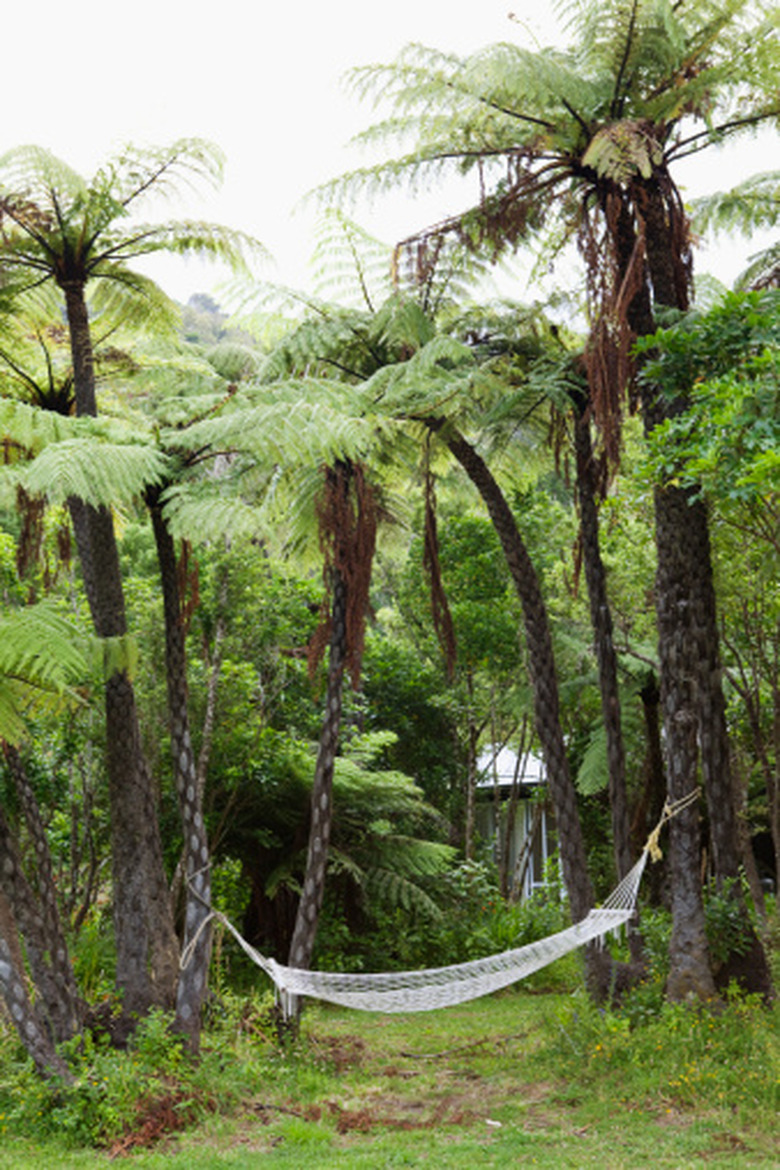Giant Cockroaches That Live In Palm Trees
The American cockroach (Periplaneta Americana Linnaeus) is the largest common cockroach. It is on average 1½ to 2 inches long. These cockroaches are generally an outdoor species that lives in trees, such as palm trees, woodpiles and sewage systems. They are reddish brown in color. There are ways to control the American cockroach infestation on your palm trees.
Baits
Baits
American cockroach baits have toxic ingredients formulated in a food source. The most effective active toxic ingredients include hydramethylnon and fipronil. A professional would apply bait containing the active toxic ingredients dinotefuran, imidacloprid, fipronil, hydramethylnon, indoxacarb or acetamiprid. American cockroach baits are sold as dusts, gels, pastes or granules. Dust baits should be applied with a bulb duster. Pastes and gels come with a syringe for applying into the crevices on your palm tree. The granular baits should be applied around the perimeter of the trees. Cockroach baits have low toxicity to animals, such as cats and dogs.
Insect Growth Regulators
Insect Growth Regulators
Insect growth regulators are applied by a professional pest control agent. They do not kill the cockroaches but make immature cockroaches sterile as adults. Within one year, the cockroach population dies off. It is a good practice to use insect growth regulators in combination with baits for quicker kill of the American cockroaches. The most common active ingredients are hydroprene and pyriproxyfen.
Aerosol Sprays and Inorganic Dusts
Aerosol Sprays and Inorganic Dusts
Aerosol sprays will not kill an entire American cockroach infestation but will kill individual cockroaches sprayed with the poison. Dusts are applied with a squeeze-bulb duster. These include silica aerogel and boric acid. The silica dust will adhere to the cockroaches cuticle and absorb its protective wax covering. This dehydrates the cockroach and kills it. Boric acid is toxic to the cockroach's stomach. The cockroach walks on the dust and ingests it when it grooms itself.
Cite This Article
MLA
Madson, Linda. "Giant Cockroaches That Live In Palm Trees" sciencing.com, https://www.sciencing.com/giant-cockroaches-that-live-in-palm-trees-12406378/. 21 July 2017.
APA
Madson, Linda. (2017, July 21). Giant Cockroaches That Live In Palm Trees. sciencing.com. Retrieved from https://www.sciencing.com/giant-cockroaches-that-live-in-palm-trees-12406378/
Chicago
Madson, Linda. Giant Cockroaches That Live In Palm Trees last modified March 24, 2022. https://www.sciencing.com/giant-cockroaches-that-live-in-palm-trees-12406378/
